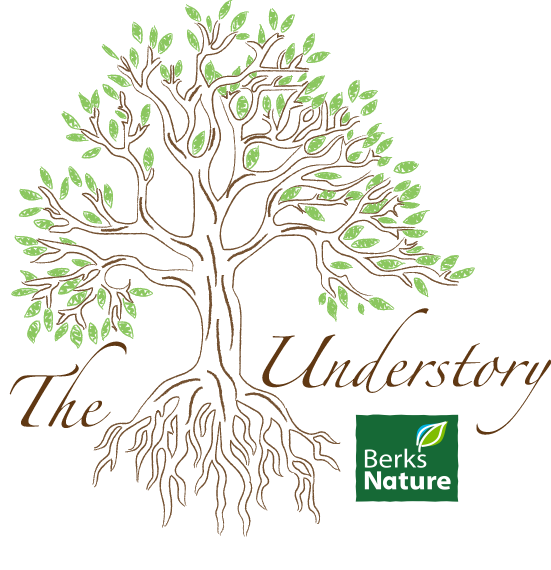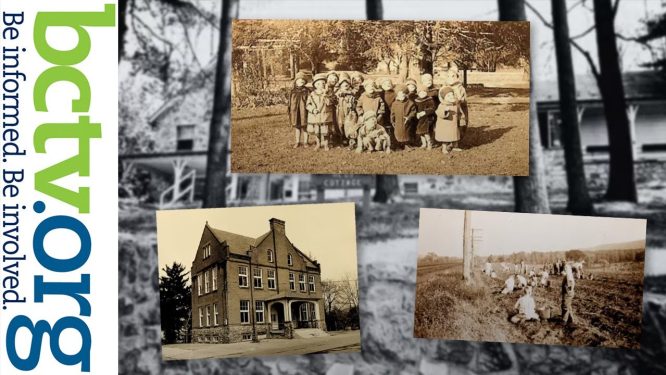Don’t it always seem to go,
That you don’t know what you’ve got ’til it’s gone?
They paved paradise,
And put up a parking lot.
– Joni Mitchell, “Big Yellow Taxi”
Across the United States, cities are trading trees for pavement and other impervious surfaces – those man-made materials that cover our streets, sidewalks, and homes but prevent water from soaking into the soil and joining the subterranean network of groundwater upon which we all rely.
In 2018, it was estimated that the United States fells about 36 million urban trees every year – that’s an annual loss of about 175,000 forested acres in cities alone. Losing these trees comes at a steep cost.
By shading our neighborhoods, trees can reduce home energy use; by filtering air pollution, trees help us breathe easier; and by some quality not fully understood by science, trees can miraculously ease depression, reduce stress, and may even boost our lifespans!
The annual benefit of urban forests in the United States is estimated to be $18.3 billion. Losing 175,000 urban forest acres each year? That’s going to cost us $96 million annually.
Complicating matters is what we do once the trees are gone. Too often, we replace these trees with paved, impervious surfaces. Between 2007 and 2013, 40% of newly installed impervious cover paved over formerly forested areas.
The expansion of impervious cover presents its own challenges.
The roads, driveways, and parking lots that characterize urban areas absorb and radiate heat. Any bare-footed child who has dared dwell too long on a summer scorched driveway can attest to this. By trapping this heat, impervious surfaces can elevate the ambient air temperature of cities – what scientists call a “heat island” effect.
Heat island living is no vacation. Higher temperatures demand more energy to keep buildings cool and increased energy demands, when produced using fossil fuels, can elevate ozone production and pollutant emissions, which in turn compromise the health and comfort of urban residents.
As the name suggests, impervious surfaces aren’t permeable – like a shield, they are difficult to pierce and prevent anything from passing through. This includes water. As rain falls, it finds no route through which to reach the soil and groundwater below. Instead, the rain flows over the pavement, picking up chemical residues, debris, and other contaminants along the way before flooding into nearby streams as stormwater runoff.
By preventing natural percolation of rainwater through the soil, impervious cover disrupts the water cycle – overwhelming local streams with excessive stormwater. In urban areas, between 30-40% of rainfall flows directly into the nearest stream compared to less than 5% in a forest.
The result: accelerated erosion and pollution which compromises stream health, degrades natural habitats, and increases remediation costs at water treatment plants.
Location, Location, Location
It doesn’t take much to throw the water cycle off balance. Once 5-7% of a watershed is sealed up with impervious surfaces, water and aquatic habitat quality can deteriorate. However, the environmental cost of impervious cover is both a matter of quantity as well as proximity.
The closer we pave to our waterways, the greater the consequences to stream health. Unfortunately, national trends suggest that impervious cover is infringing on many of our Nation’s streams. In nearly 27% of watersheds in the United States, impervious cover occupies more space immediately adjacent to streams than it does across the entire watershed. More locally, the majority of Pennsylvania’s watersheds have at least 15% of their streams and shorelines in the vicinity of highly concentrated impervious cover.
Here in Berks County, although about 42% of our total land area flourishes with forests, 12% of the land is classified as impervious. This exceeds the 7% threshold for maintaining sensitive streams.
What about proximity?
Berks County is home to approximately 1,366 miles of streams – a sum that is eclipsed by the 3,313 miles of state and local roads that traverse the County. Most of these waterways drain into the Schuylkill River, which supplies drinking water to millions of people downstream, including the City of Philadelphia.
The Schuylkill’s journey through Berks County weaves and curls through a perilous gauntlet of pavement. Entering the county from the north, it rambles southward along Route 61 before turning east through the City of Reading and snaking its way towards Philadelphia along the U.S. Route 422 corridor.
The Reading metro area has the highest density of development and impervious cover than anywhere else in the County. Streaks of dense, impervious cover radiate out from the City of Reading along the major roadways of Routes 222 and 422.
Roads have been a driving force in shaping the development patterns of Berks County and U.S. Route 422 is no different. Most of Berks County’s future growth is projected to occur along major roads and highways, specifically in the southeastern portion of Berks along U.S. Route 422 and the Schuylkill River.
This proximity to the Schuylkill River is potentially problematic. But strategic growth and individual action can help protect the Schuylkill and the rest of Berks County’s waterways from the perils of impervious cover.
Finding a Balance
Berks Nature supports a balanced approach to land use – one that encourages growth where infrastructure already exists while protecting the natural and open landscapes that make Berks County such a special place to live, work, and visit.
The Berks County Planning Commission shares this vision, striving to strike a balance between growth and environmental sustainability as development in Berks County inevitably expands to accommodate new residents and businesses.
In the 2030 Comprehensive Plan, the Berks County Planning Commission prioritizes in-fill development, a process that capitalizes on vacant or poorly utilized parcels within existing urban areas. In-fill development limits urban sprawl and the potential for new impervious cover to impose on local streams while also revitalizing and modernizing urban centers.
What about the Schuylkill River, and its concourse through the throngs of impervious occupation?
We can’t re-route the Schuylkill, but anyone living in its increasingly paved watershed can subvert impervious invasion by addressing their own stormwater runoff.
- Reduce stormwater contamination by applying lawn chemicals sparingly (or not at all!)
- Prevent river pollution by disposing of trash and other household wastes appropriately (the storm drain is never an appropriate receptacle for trash!)
- Keep your car repaired and driving smoothly (a clunker can leave oil residue on roads).
- Direct your downspouts onto gardens or lawns (anything that’s more permeable than pavement and will allow rainwater to soak into the ground).
- Adopt a rain barrel (which will capture your runoff and save it for reuse later!)
- Plant a rain garden (a beautiful landscape addition that helps to collect and filter stormwater)
Even on the outskirts of Reading, the metropolitan center of Berks County, Berks Nature is doing our part to intercept stormwater and reroute it back into the natural rhythm of the water cycle.
Demonstrating sustainability beats at the heart of The Nature Place – Berks Nature’s Gold LEED Certified education center at Angelica Creek Park. A rain garden, lush with native grasses and blooming perennials, flourishes on the property as a testament to the beauty, efficiency, and accessibility of green infrastructure.
The garden was designed specifically to catch rainwater sloughing off the building’s roofs, which are angled to direct their runoff towards the garden. The two features complement each other; by directing runoff to the rain garden, stormwater can filter slowly back into the soil and recharge ground water without overburdening Angelica Creek, which meanders nearby.
But let’s not forget the plight of our urban trees. Planting new trees alongside streams not only replaces lost trees but also buffers our local waterways from the growing scourge of stormwater. Here too, Berks Nature has risen to the challenge. Between 2015 and 2019, Berks Nature has planted around 2,215 trees around the county, 429 of which found new stream-side homes in 2019 alone.
Humans may be the kings of Earth’s concrete jungles – already, 80% of Americans live in or near cities – but we cannot live without our natural heritage; the breath-giving trees who share their shade and ease our mental grief and the life-sustaining rivers that nourish this verdant world and quench our thirst.
We should all think twice before paving them over.




